The end of Shaolin Inc.? A new abbot, a new era
In the days since Abbot Shi Yongxin was replaced by Abbot Shi Yinle, the once highly commercialised Shaolin Temple has seen an overhaul in temple practices, returning to the focus on religious training and self-sufficiency through farming. Lianhe Zaobao’s China Desk takes a look at the changes.
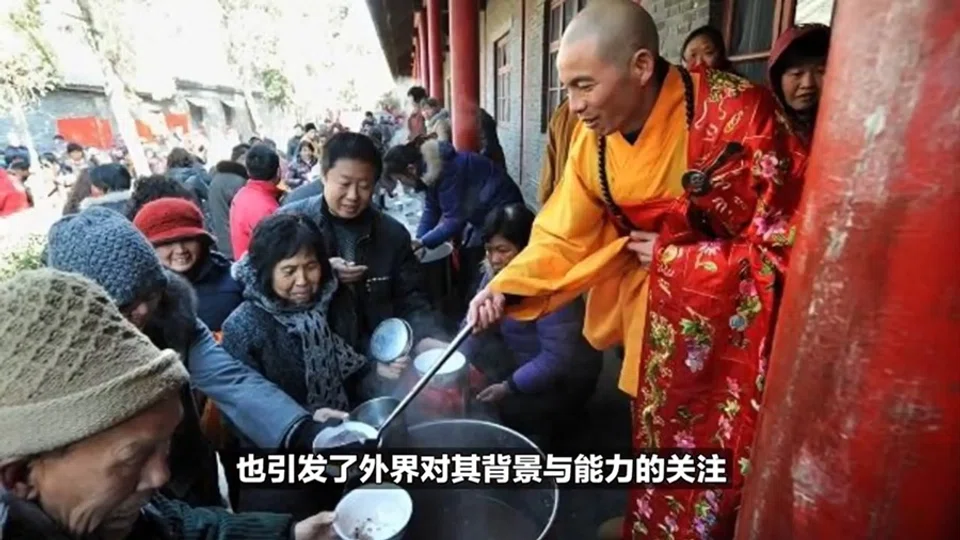
At the end of July, it was officially announced that the authorities had placed internet celebrity Abbot Shi Yongxin of the 1,500-year-old Shaolin Temple under investigation. Abbot Shi Yinle of White Horse Temple in Luoyang was quickly appointed to the Shaolin hot seat on 29 July to manage the crisis.
As a Han Buddhism monk with a stringent education in Buddhist studies, Shi Yinle’s style is the polar opposite to that of “CEO monk” Shi Yongxin. He not only eschews the commercialisation of Buddhism, but is also a proponent of combining manual labour with religious training. This was how he turned the White Horse Temple into an exemplar of asceticism in China.
Dredging up controversies
With fame comes controversy. Within ten days of his appointment as Shaolin abbot, news of a Shaolin “exodus” and Shi Yinle’s past “intimate interactions” with beauty pageant contestants spread, underlining the heavy responsibility he shoulders and the long way to go to restore order in Shaolin Temple.
Recently, rumours of Shi Yinle’s intimate interactions with beauty contestants from different countries appeared on Chinese websites, sparking discussions. The incident took place in July 2007 when the hundred or so contestants of the Miss Tourism World pageant visited Luoyang, which had served as the capital of nine Chinese dynasties. During their trip, the contestants visited the White Horse Temple and took photographs with Shi Yinle, its abbot then.
In the photograph circulating online, most of the contestants were scantily dressed in bikinis and mini-skirts, clearly out of place in a Buddhist temple and sullying its sanctity.
Rehashing this old news of Shi Yinle hosting foreign guests at this juncture can be construed as an attempt to tarnish the image and authority of the new abbot, or a reflection of the Chinese public’s misgivings about the country’s Buddhist fraternity.
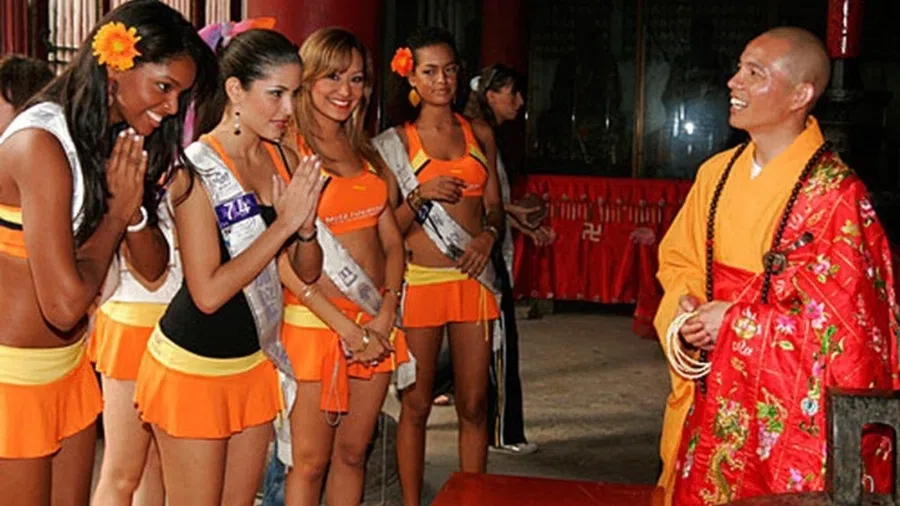
In the photo, while Shi Yinle’s expression was amicable as he interacted with the contestants, it was obvious that he consciously kept his distance from them, so the courteous exchange cannot be said to be out of line. Nonetheless, ordained monks are expected to abide by their code of conduct and keep their distance from the opposite gender, so the scene is still somewhat jarring.
Rehashing this old news of Shi Yinle hosting foreign guests at this juncture can be construed as an attempt to tarnish the image and authority of the new abbot, or a reflection of the Chinese public’s misgivings about the country’s Buddhist fraternity.
Someone came forth to defuse the situation very quickly. On 4 August, an Ifeng.com report quoted Wei Dedong, a professor of religious studies from the Renmin University of China (RUC), who recalled sending Shi Yinle a copy of the group photo in question. Besides thanking Wei in his reply, Shi Yinle also said that he would “use the photograph to ask the government to refrain from having me host these people as it would affect Buddhism’s reputation”.
Questions over Shi Yinle’s personal morals were not the only point of concern in Chinese fora recently.
There have been early signs that Shi Yinle is reversing the commercialisation of Shaolin Temple after becoming its abbot.
All commercial activities stopped
On 5 August, “Exodus at Shaolin” was among the top searches on Chinese social media, with some rumours claiming that over 30 monks have resigned — primarily the Kungfu monks and staff reliant on the temple’s commercial activities, and young monks accustomed to laxer management.
Even though there have been no reports of the mass departure from mainstream media outlets, the conditions for it to happen were laid down in recent weeks, so the rumours may not be wholly unfounded.
There have been early signs that Shi Yinle is reversing the commercialisation of Shaolin Temple after becoming its abbot. Many items or services for sale that were criticised have been removed, and donation boxes on its premises are no longer viewed as cash cows.
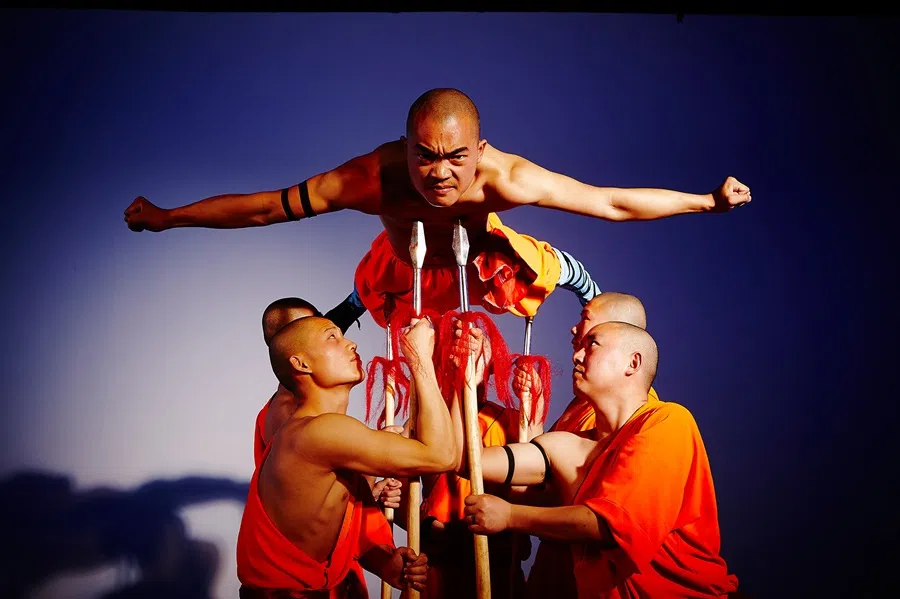
On 30 July, Yicai reported that only a few stalls within the temple were still operating the day after Shi Yinle took over. Additionally, commercial activities like overseas performances by its Kungfu monks that can reportedly rake in US$500,000 per show, its cultural and creative merchandise shop, and online Taobao shop have been shut down.
A retail staff who has been selling souvenirs for 12 years in Shaolin Temple said that profit-sharing generated monthly incomes of over 10,000 RMB (US$1,400) in the past, but now that the shops have been shuttered, “leaving is the only option”. These jobs were added as part of Shaolin’s commercial expansion and unrelated to Buddhism training.
Kungfu monks holding QR payment codes can no longer be seen; while Shaolin printed materials previously for sale are now displayed on shelves for visitors to browse for free.
At the same time, there are no longer stalls selling incense sticks, in particular the pricey “personal safety” and “familial bliss” joss sticks. Instead, visitors can queue up for free joss sticks. Additionally, Kungfu monks holding QR payment codes can no longer be seen; while Shaolin printed materials previously for sale are now displayed on shelves for visitors to browse for free.
Shi Yinle also restored the tradition of “placing equal emphasis on farming and meditation practice”. It is now compulsory for Shaolin monks to participate in scripture chanting at 4.30 each morning. This is followed by farming and meditation or martial arts training in the afternoon. At the same time, mobile phones are also held in the warehouse, entertainment activities prohibited, and monks need to apply to leave the temple on weekends. A young monk took to social media to complain, “I’m used to looking up and reading scriptures on my phone. I feel like I’ve lost an arm with the sudden confiscation of my device.”
At the same time, Chinese netizens are also discussing the five new major initiatives that were supposedly rolled out by Shi Yinle on the first day of his tenure. These include halting commercial performances, prohibiting exorbitant consecrations, closing down shops on temple grounds, promoting self-sufficiency through farming, and reforming income allocation. A monk who resigned said frankly, “I thought seeking donations with my QR payment code counted as training, who knew I had to harvest wheat in the fields.”
Even though Shaolin Temple did not publicly describe these as its new initiatives, they are very similar to Shi Yinle’s management style at White Horse Temple.
Exodus of ‘fake’ monks
The majority of Chinese netizens are in favour of the Shaolin resignations and quipped that “the fake monks have finally met a real abbot”, believing that those who left are not real monks, but are more interested in money than scriptures.
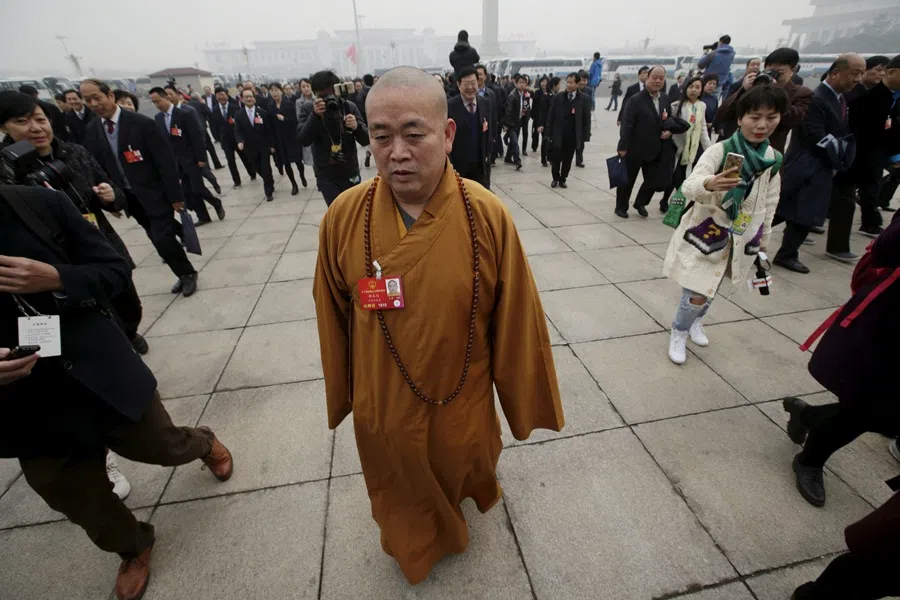
A recent commentary on the Sing Tao Daily opined that it is normal for Shaolin monks to be “expelled” or leave if they are unable to cope. In fact, the exodus is more likely due to the differing styles of Shi Yinle and his degenerate predecessor. Furthermore, many on the outside hope that Shi Yinle can rid the institution of the poison afflicting it and guide it back onto the right path.
The article also pointed out that “an all-round tightening of discipline” and “decommercialisation” are all but certain, with the “purging of what remains of Shi Yongxin’s corruption” still to come.
At the same time that Shaolin is decommercialising, it is also hastening the eradication of Shi Yongxin’s imprints. Ifeng.com reported that a stone plaque erected within the temple when Shi Yongxin became its 30th abbot in 1999 has been demolished after he landed in trouble.
Ordinary, down-to-earth abbot
According to public information, 59-year-old Shi Yinle, who became a monk at the age of 16, was born Yin Qingquan in Tongbai, Henan. In 1983, he headed to the Qixia Temple (where the late Venerable Master Hsing Yun was ordained) in Nanjing for his full ordination. In 1990, he graduated from the Buddhist Academy of China.
Jingxin, a Buddhist and long-time follower of Shi Yinle, feels that Shi Yinle is a revered monk who strictly adheres to the Buddhist code of conduct, focuses on Buddhist traditions, and emphasises the sanctity of temples.
After graduation, Shi Yinle worked at the Henan Provincial Buddhist Association before going to Sri Lanka for further studies. Later on, he became the vice-secretary general and then the vice-president of the Henan Provincial Buddhist Association. He is also a member of the 14th National People’s Congress and a typical political-type monk.
Shi Yinle’s lean appearance is very different from the stoutness of his predecessor. RUC’s Wei described Shi Yinle as “down to earth” and “low-key”, similar to the opinions of many of those who have met the monk. Jingxin, a Buddhist and long-time follower of Shi Yinle, feels that Shi Yinle is a revered monk who strictly adheres to the Buddhist code of conduct, focuses on Buddhist traditions, and emphasises the sanctity of temples.
In October 2003, the Henan Provincial Buddhist Association sent Shi Yinle to oversee the affairs of White Horse Temple. In November 2005, he was appointed its abbot, ending the eight-year-long vacancy of the position.
Built in the Eastern Han Dynasty, White Horse Temple is the first Buddhist temple built by Chinese rulers after the religion entered China. With a history spanning nearly two millennia, it is the oldest monastery in the country.
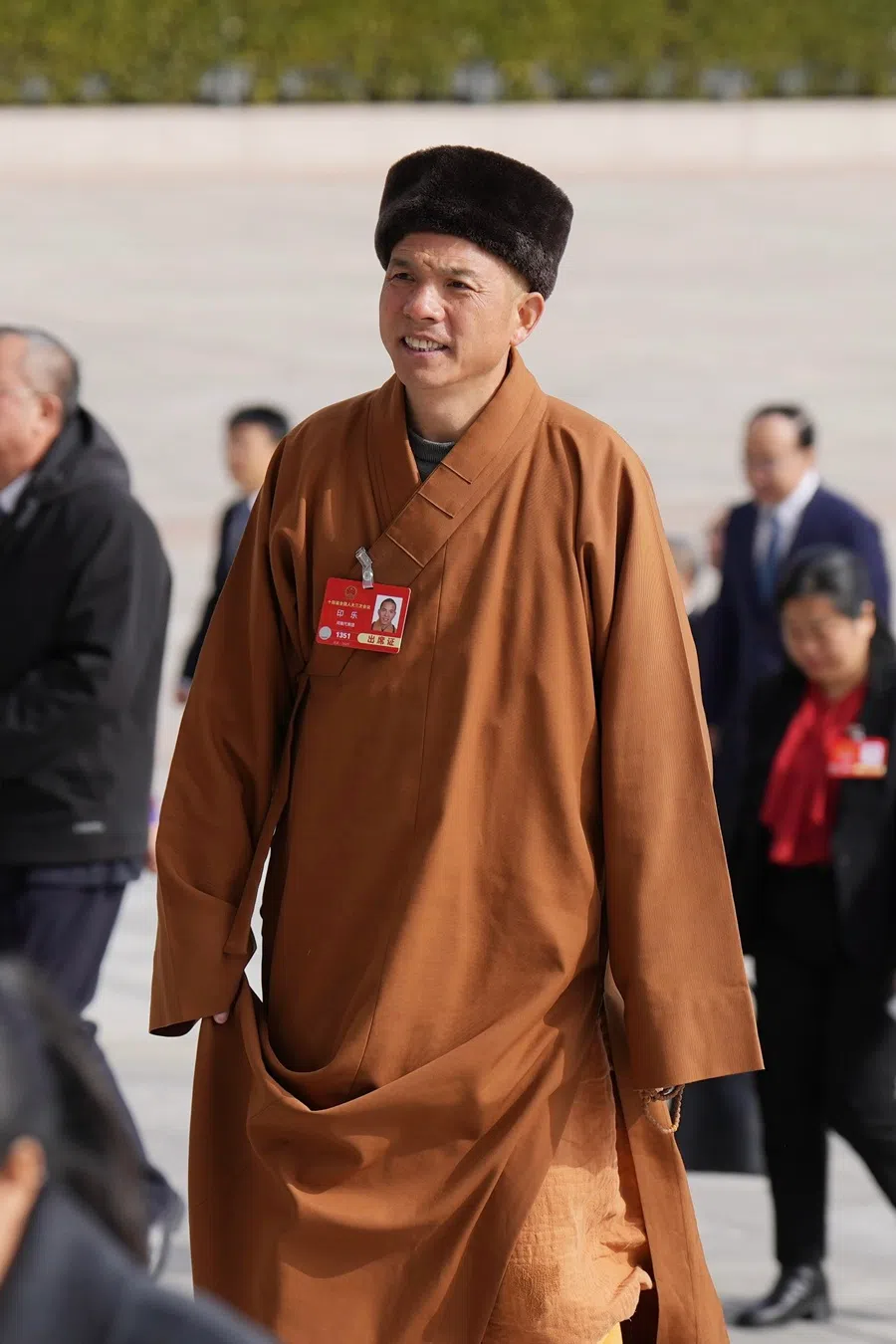
As a proponent of punishing those who abuse Buddhism for personal financial gains, Shi Yinle is widely lauded in the Chinese Buddhism fraternity. During his more than two decades as abbot of White Horse Temple, he not only oversaw the refurbishment of its ancient buildings and shored up discipline, but also insulated it from commercial activities. Other than entry tickets, there is no sign of commerce on temple premises.
He also requested the temple’s monks to focus on meditation and take up farming chores to be self-sufficient. Besides pairing manual labour with Buddhism training, a photograph of Shi Yinle harvesting wheat in a tractor also went viral.
After Shi Yinle became Shaolin Abbot, many netizens shared photographs they took with him during previous visits to White Horse Temple and endearingly referred to him as an “ordinary farmer” or “peasant uncle” for his humility.
A few years back, heavy rains in Luoyang loosened the soil within White Horse Temple, causing many trees to lean dangerously. At that time, Shi Yinle led by example as he participated in rectification works to straighten the trees.
After Shi Yinle became Shaolin Abbot, many netizens shared photographs they took with him during previous visits to White Horse Temple and endearingly referred to him as an “ordinary farmer” or “peasant uncle” for his humility.
Nourishing the soul instead of temple coffers
As for promoting the religion, Shi Yinle restarted the “Dialogues in the Shaolin meditation hall at night” (“少林禅堂夜话”) programme to livestream scripture lectures. He also took the lead to organise a Belt Road Initiative Buddhism forum to spread Buddhist culture overseas.
Netizens also shared that the monks of White Horse Temple engage in farming work to be self-sufficient. The temple also provides free vegetarian meals to the public on the first and fifteenth day of each lunar month.
White Horse Temple’s approach has also earned recognition from Chinese leaders. In May, Shi Yinle accompanied Chinese President Xi Jinping during his field trip to the temple to understand the sinicisation of Buddhism and its relic preservation efforts.
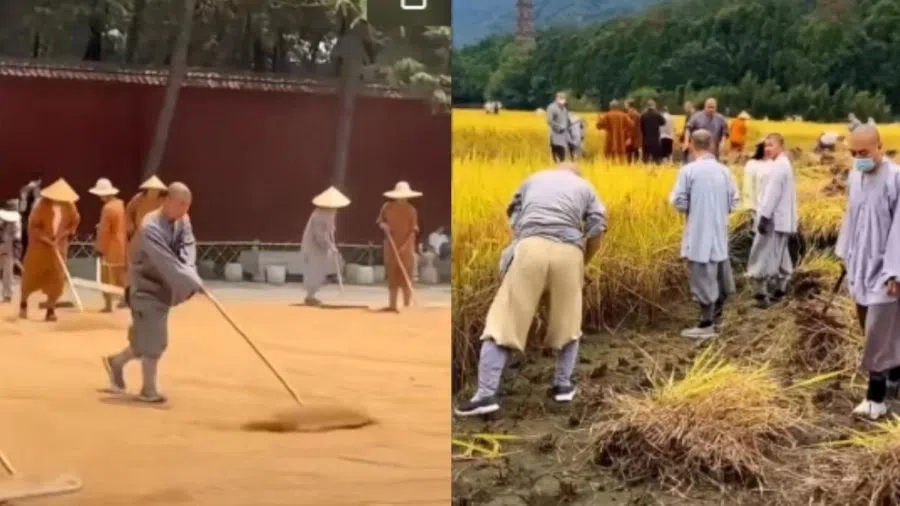
Nonetheless, the White Horse Temple model may be out of place in the more commercialised Shaolin Temple. Some netizens worry about Shaolin’s finances as Shi Yinle’s reforms would drastically reduce income and raise its operating costs, causing it to spend more than it earns.
During Shi Yongxin’s tenure, it is estimated that Shaolin Temple earned over a billion RMB annually through its 795 trademarks and over 60 branches worldwide. A netizen said, “Shi Yongxin sustained an entire industry that sprouted around Shaolin Temple, but Shi Yinle only wants to nourish the souls of its monks.”
Given the business empire left behind by his predecessor, the bold moves Shi Yinle embarked on to decommercialise and restore disciplinary standards are bound to face resistance both within and without. Internally, the challenge is whether Shaolin monks are able to keep up with his reforms; externally, the issue is whether commercial entities whose interests have been impacted would impede the reforms. The situation is indeed precarious.
While those in-charge at large monasteries have renounced their worldly ties, their positions also mean that secular dealings are unavoidable. Other than Shaolin Temple making decommercialisation the focus of its current reforms, the authorities can also consider implementing policies to create the conditions for minimising secular dealings that important religious figures need be involved in. Concurrently, it is important to provide safer settings for such interactions to avoid controversies. Religious leaders can only discharge their responsibilities properly and earn the trust of their followers by steering clear of criticisms.
This article was first published in Lianhe Zaobao as “被“翻旧账”的释印乐能否挽救少林寺?”.
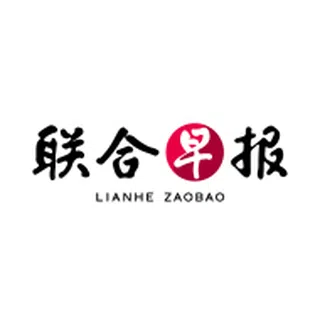

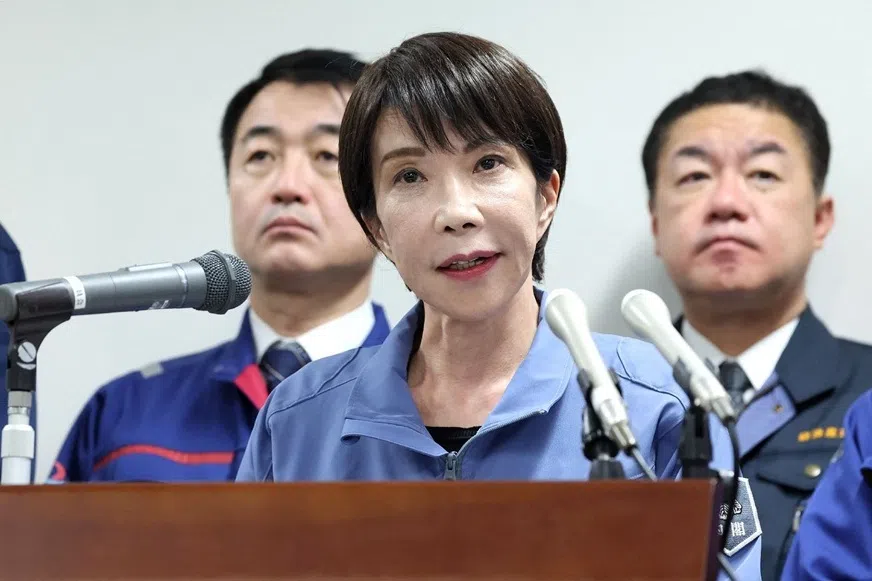
![[Big read] China’s 10 trillion RMB debt clean-up falls short](https://cassette.sphdigital.com.sg/image/thinkchina/d08cfc72b13782693c25f2fcbf886fa7673723efca260881e7086211b082e66c)
![[Big read] Love is hard to find for millions of rural Chinese men](https://cassette.sphdigital.com.sg/image/thinkchina/16fb62fbcf055b710e38d7679f82264ad682ce8b45542008afeb14d369a94399)
